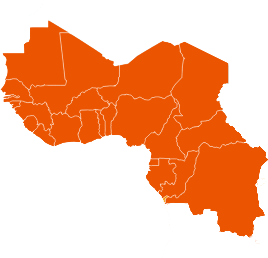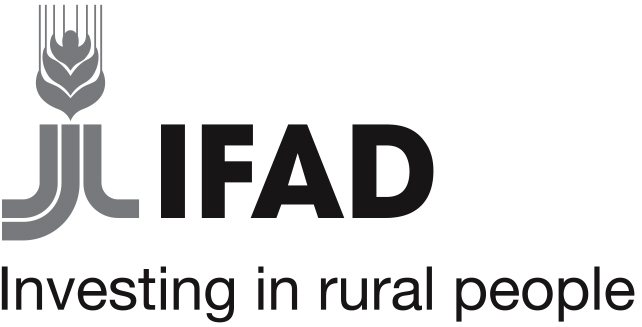Rural entrepreneurship resource centers
“I could never earn enough as a farmer to pay for all my family's needs. I was certain with this kind of metal work, I could earn more money and buy everything we needed.”
Koudougou Lamousssa, Entrepreneur.BACKGROUND
Subsistence farming is the default livelihood for many people in Burkina Faso. It often fails to provide a good quality of life for families, but there are few established alternatives.
Rural enterprise support centers (CREERs) provide a gateway to business development for people with high-potential ideas.WHAT’S INVOLVED
Rural poverty alleviation
Burkina Faso’s ecology means that subsistence farming is difficult and precarious. By fostering new ways to make a living, the project provides a path to financial security for both microenterprises and their potential employees, and could even help stem the tide of rural-urban migration.
Public-private partnership
CREERs act as champions of economic initiative, helping entrepreneurs move from ideas to sustainable businesses through provision of subsidized support. The project often taps into the corporate sector, with private service providers playing a key role.EXPLORE THIS SOLUTION
The CREERs project can offer
- A model for business incubator schemes in poor rural areas

Countries involved
Burkina Faso
Project partners
West African Development Bank
Project dates
2009 - 2015
Share this solution
Bookmark this solution
BookmarkShow Full Solution
Summary
Strengthening the local private sector through training, advisory services, marketing, business management advice, and technology development were combined in a strategy for addressing rural poverty in Burkina. The strategy was accomplished through the Rural Business Development Services Programme (PASPRU), by setting up 60 "rural entrepreneurship resource centers" (Centre de ressources en entreprenariat rural, or CREERs). CREERs act as main contact points with microenterprises for their income-generating activities. They contribute to rural poverty reduction mainly by increasing access to business development services, vocational training and technology, and by enhancing the enabling environment for the development of the local rural private sector.
Challenge
Development of microenterprises in Burkina Faso is hindered by lack of resources, technology and access to the key services required to expand and improve their enterprises. To overcome these constraints the PASPRU project established rural entrepreneurship resource centers (Centres de ressources en entreprenariat rural, or CREERs) that provide support to microenterprises.
Solution
The CREERs centers act as providers of business development services for SMEs, and are the primary contact points for targeted enterprises. CREERs provide them with the following services:
- supporting the establishment of new microenterprises
- providing enterprises with access to appropriate technologies, advisory services for cultivation and processing
- guidance in adopting quality assurance processes
- marketing support
- guidance in the acquisition of equipment and machinery.
They also provide assistance in orienting microenterprises to access public and private services and with vocational training. Within the PASPRU project, the CREERs initially received financial support to strengthen their network and deepen outreach. Subsequently, they regularly organized promotion campaigns to foster rural entrepreneurship and community-level awareness-raising sessions with a range of stakeholders, including elected community representatives, opinion leaders and value chain organizations. These sessions were also used to channel information on opportunities and needs back to the programme offices.
Direct beneficiaries of the CREERs are mainly small and medium-sized enterprises wishing to expand and upgrade their activities. CREERs have complete freedom to define their own cost recovery approaches provided that they set very low fees for the target groups (those at the bottom of the poverty spectrum), to be cross-subsidized with higher, commercial fees charged to non-target groups. Success of the programme is determined by: (i) ability of the CREERs to operate successfully completely on their own; and (ii) the survival rate of the microenterprises supported by them.
Results
A large percentage of the service providers have made progress towards financial self-sufficiency. The volume of medium-term loans obtained by supported enterprises has increased, a large number of full-time jobs have been created, and there have been improvements in the teaching skills of community-based trainers. The 12,000 rural microenterprises assisted under the project represent a continuum from “champions of economic initiatives” (a term commonly used in Burkina Faso) to income-generating activities with real development potential that particularly target women and young people, to microenterprises and microenterprise organizations. Many of the beneficiaries have evolved from income-generating activities to microenterprises, and increased their profits.
Overall, the project has achieved significant results in promoting new approaches to public and private goods and services delivery in smallholder agriculture, and in developing a public-private partnership model for rural microenterprise development, mainly in the productive sector. Impact has been related to promotion of business development services that have resulted in income smoothing and diversification. Business development services have contributed to successful rural micro-enterprise start-ups and consolidations, leading to more rural employment and increased non-agricultural incomes, mostly through upgrading of existing technologies and the introduction of new opportunities for processing and value addition. The CREER approach is also tapping the corporate sector to foster equitable growth and job creation, with the latter helping to stem rural-urban migration; and an increase in the value of daily wage labor.
Lessons learned and potential for replication
The CREERs have proven to be a highly successful initiative, with great potential for scaling up and replication.
- Lasting trust has been created and maintained through the presence of an entity providing advisory services to the SMEs through a proximity structure (CREER)
- The rural entrepreneurs are demanding innovation, good practice and support and are willing to pay for services when they associate a value with them
- Training in management and entrepreneurship and the provision of adapted management tools (simplified accounting, work organization, etc.) is an important factor in the success of an SME
- Access to finance remains one of the crucial problems for the development of SMEs
- The SMEs need better access to information on markets and business events to market their products and make business contacts
- The absence of certain management tools and the prolonged vacancies of essential posts are detrimental to the good execution of the projects
- It is helpful to have public sector institutions as part of the programme from the outset, especially in areas such as vocational training provision.
Next steps
The coming project in the same region (PAPFA), on-target to be approved at the end of 2017, builds on the lessons learned and successes of PASPRU and will bring the CREER scheme to the next level.
Solution Video
Solution Image
Solution Additional Resources
Programme d’appui et de promotion du secteur privé en milieu rural (PASPRU) - Project overviewLast update: 09/08/2018

